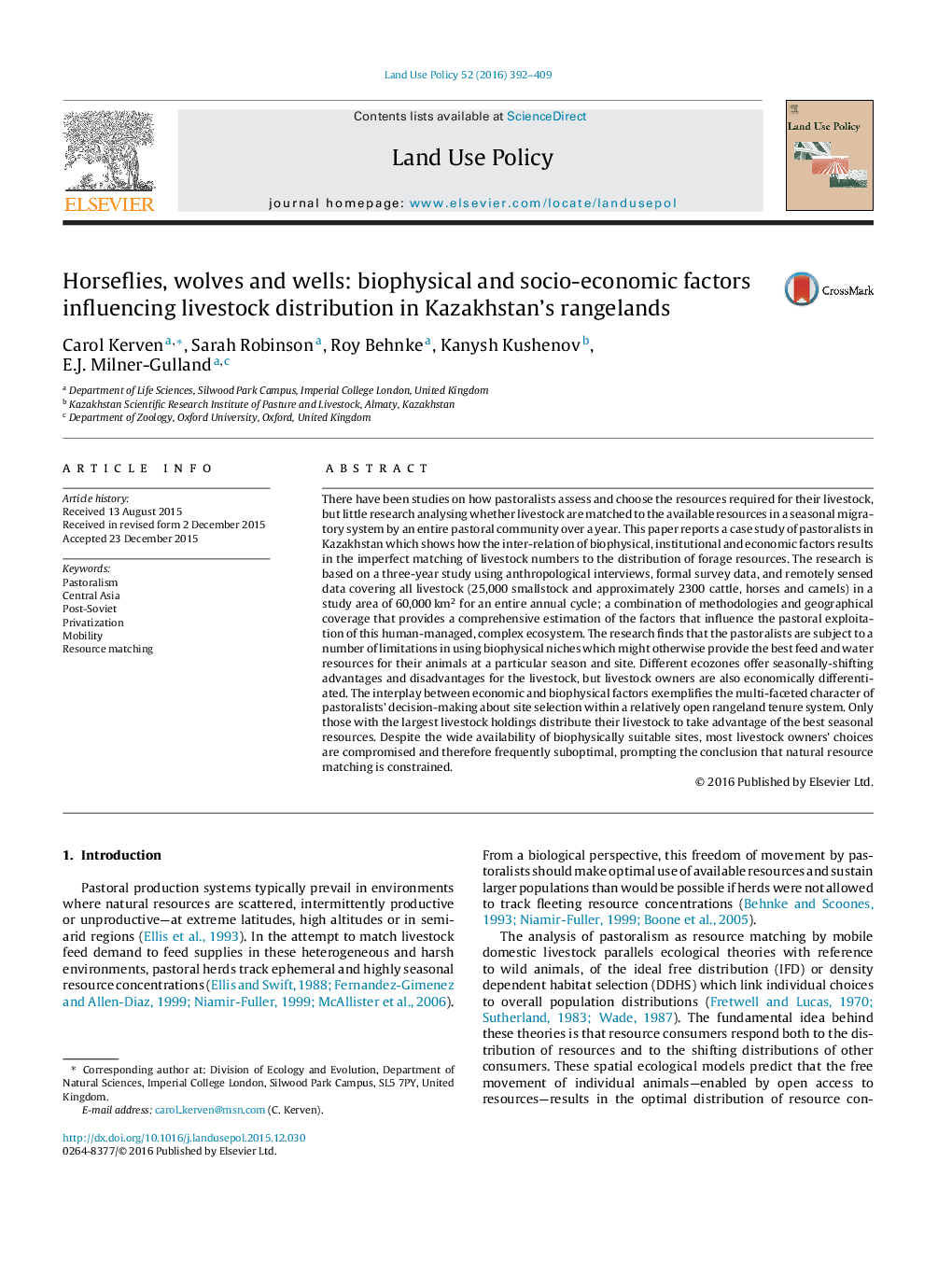| Article ID | Journal | Published Year | Pages | File Type |
|---|---|---|---|---|
| 6547501 | Land Use Policy | 2016 | 18 Pages |
Abstract
There have been studies on how pastoralists assess and choose the resources required for their livestock, but little research analysing whether livestock are matched to the available resources in a seasonal migratory system by an entire pastoral community over a year. This paper reports a case study of pastoralists in Kazakhstan which shows how the inter-relation of biophysical, institutional and economic factors results in the imperfect matching of livestock numbers to the distribution of forage resources. The research is based on a three-year study using anthropological interviews, formal survey data, and remotely sensed data covering all livestock (25,000 smallstock and approximately 2300 cattle, horses and camels) in a study area of 60,000Â km2 for an entire annual cycle; a combination of methodologies and geographical coverage that provides a comprehensive estimation of the factors that influence the pastoral exploitation of this human-managed, complex ecosystem. The research finds that the pastoralists are subject to a number of limitations in using biophysical niches which might otherwise provide the best feed and water resources for their animals at a particular season and site. Different ecozones offer seasonally-shifting advantages and disadvantages for the livestock, but livestock owners are also economically differentiated. The interplay between economic and biophysical factors exemplifies the multi-faceted character of pastoralists' decision-making about site selection within a relatively open rangeland tenure system. Only those with the largest livestock holdings distribute their livestock to take advantage of the best seasonal resources. Despite the wide availability of biophysically suitable sites, most livestock owners' choices are compromised and therefore frequently suboptimal, prompting the conclusion that natural resource matching is constrained.
Related Topics
Life Sciences
Agricultural and Biological Sciences
Forestry
Authors
Carol Kerven, Sarah Robinson, Roy Behnke, Kanysh Kushenov, E.J. Milner-Gulland,
